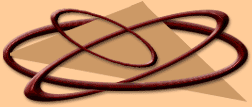
| Home | First page. | Who are we? | History of the breed | Pedigree's | Standard | Picturebooks Dutch site | Kejim pics | Hunters pics. | Kaya pics | Our first litter | Photoalbum | Guestbook |
|
Amandelgaard Tollers
|
 |
|
|
Standard
|
|
|
|
Origin and Purpose: The Nova Scotia Duck Tolling Retriever was
developed in Nova Scotia in the early 19th century to toll (or lure) and retrieve waterfowl. The tolling dog runs, jumps,
and plays along the shoreline in full view of flocks of ducks, occasionally disappearing from sight and then quickly reappearing,
aided by the hunter, who throws small sticks or a ball for the dog. The dog's playful actions arouse the curiousity of the
ducks swimming offshore and they are lured within gunshot range. The Toller is subsequently sent out to retrieve the dead
or wounded birds.
General Appearance: The Toller is a medium-sized, powerful,
compact, balanced, well-muscled dog; medium to heavy in bone, with a high degree of agility, alterness and determination.
Many Tollers have a slightly sad expression until they go to work, when their aspect changes to intese concetration and excitement.
At work, the dog has a speedy, rushing action, with the head carried out almost level with the back and heavily-feathered
tail in constant motion.
Temperament: The Toller is highly intelligent, easy to train
and has great endurance. A strong and able swimmer, he is a natural and tenacious retriever on land and from water, setting
himself for springy action the moment the slightest indication is given that retrieving is required. His strong retrieving
desire and playfulness are qualities essential to his tolling ability.
Size: Ideal height for males over 18 months is 19-20 in. (when
breed standards are converted to metric, the figures 48-51 cm. should be used); females over 18 months 18-19 in. (when breed
standards are converted to metric the figures 45-48 cm. should be used). 1 in. (when breed standards are converted to metric
the figure 2.5 cm. should be used) over or under ideal height is allowed. Weight should be in proportion to the height and
bone of the dog (guidelines 45-51 lbs, when breed standards are converted to metric, the figure 20-23 kg. should be used,
for adult males; bitches 37-43 lbs., when breed standards are converted to metric, the figures 17-20 kg. should be used).
Coat and Color: The Toller was bred to retrieve from icy waters
and must have a water-repellant double coat of medium length and softness with softer dense undercoat. The coat may have a
slight wave on the back, but is other wise straight. Some winter coats may form a long loose curl at the throat. Featherings
are soft at the throat, behind the ears and at the back of the thighs, and forelegs are moderately feathered. Color is various
shades of red or orange with lighter featherings and underside of tail, and usually at least on of the following white markings
- a tip of tail, feet (not extending beyond the pasterns), chest and blaze. A dog of otherwise high quality is not to be penalized
for lack of white. The pigment of the nose, lips and eye rims to be flesh-colored, blending with coat, or black.
Head:
Forequarters: Shoulders should be muscular with the blade well
laid back and well laid on, giving good withers sloping into short back. The blade and upper arm are roughly equal in length.
Elbows should be close to the body turning neither in nor out, working cleanly and evenly. The forelegs should appear as parallel
columns straight and strong in bone. The pasterns are strong and slightly sloping. The strong webbed feet are of medium size,
tight and round with well arched toes and thick pads. Dewclaws may be removed.
Body: Deep-chested with good spring of rib, brisket reaching
to the elbow. The back is short and straight, the topline level, the loins strong and muscular. The ribs are well sprung,
neither barrel shaped nor flat. Tuck up is moderate.
Hindquarters: Muscular, broad and square in appearance. Rear
and front angulation should be in balance. Thighs are very muscular, upper and lower sections bent approximately equal in
length. Stifles are well bent and hock well down, turning neither in nor out. Dewclaws must not be present.
Tail: Following the natural very slight slope of the croup,
broad at the base, luxuriant and well feathered, with the last vertebra reaching at least to the hock. The tail may be carried
below the level of the back except when the dog is alert, it curves high over though never touching the body.
Gait: The Toller combines an impression of power with a springy
gait, showing good reach in front and a strong driving rear. Feet should turn neither in nor out and legs travel in a straight
line. As speed increases, the dog should single track, with the topline remaining level.
Faults: (to be penalized according to degree) Disqualifications: |
|
|